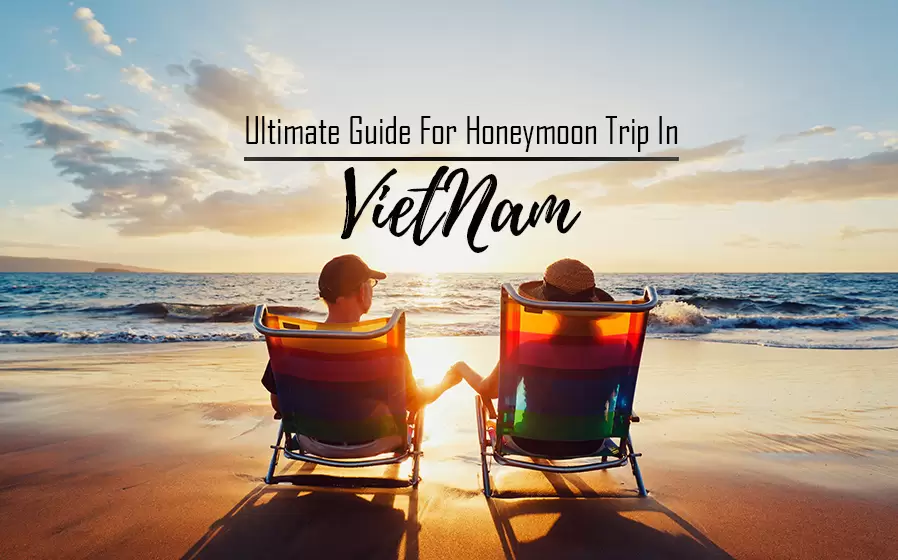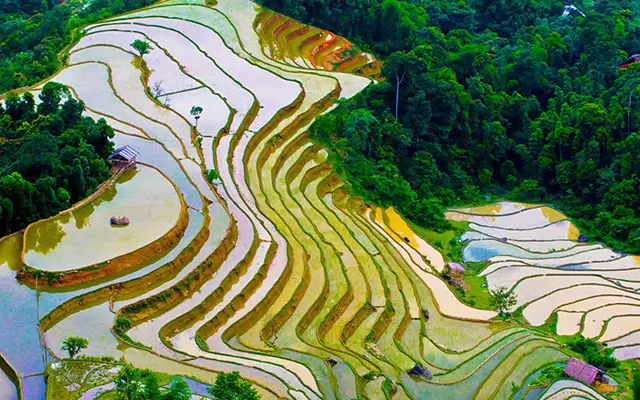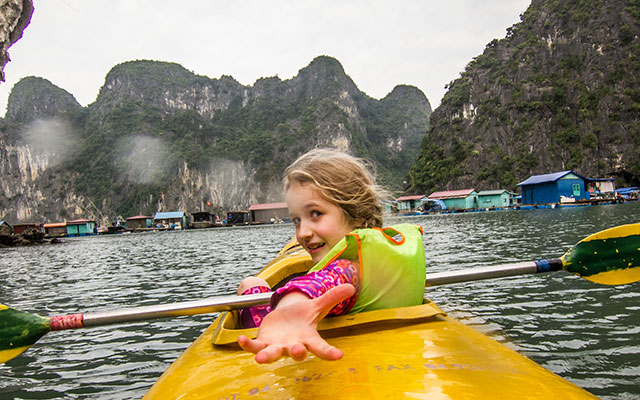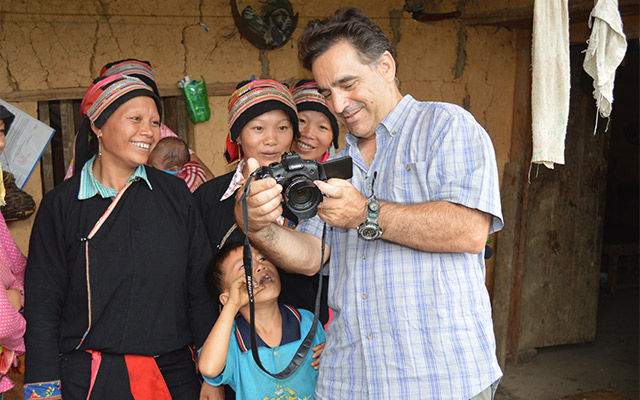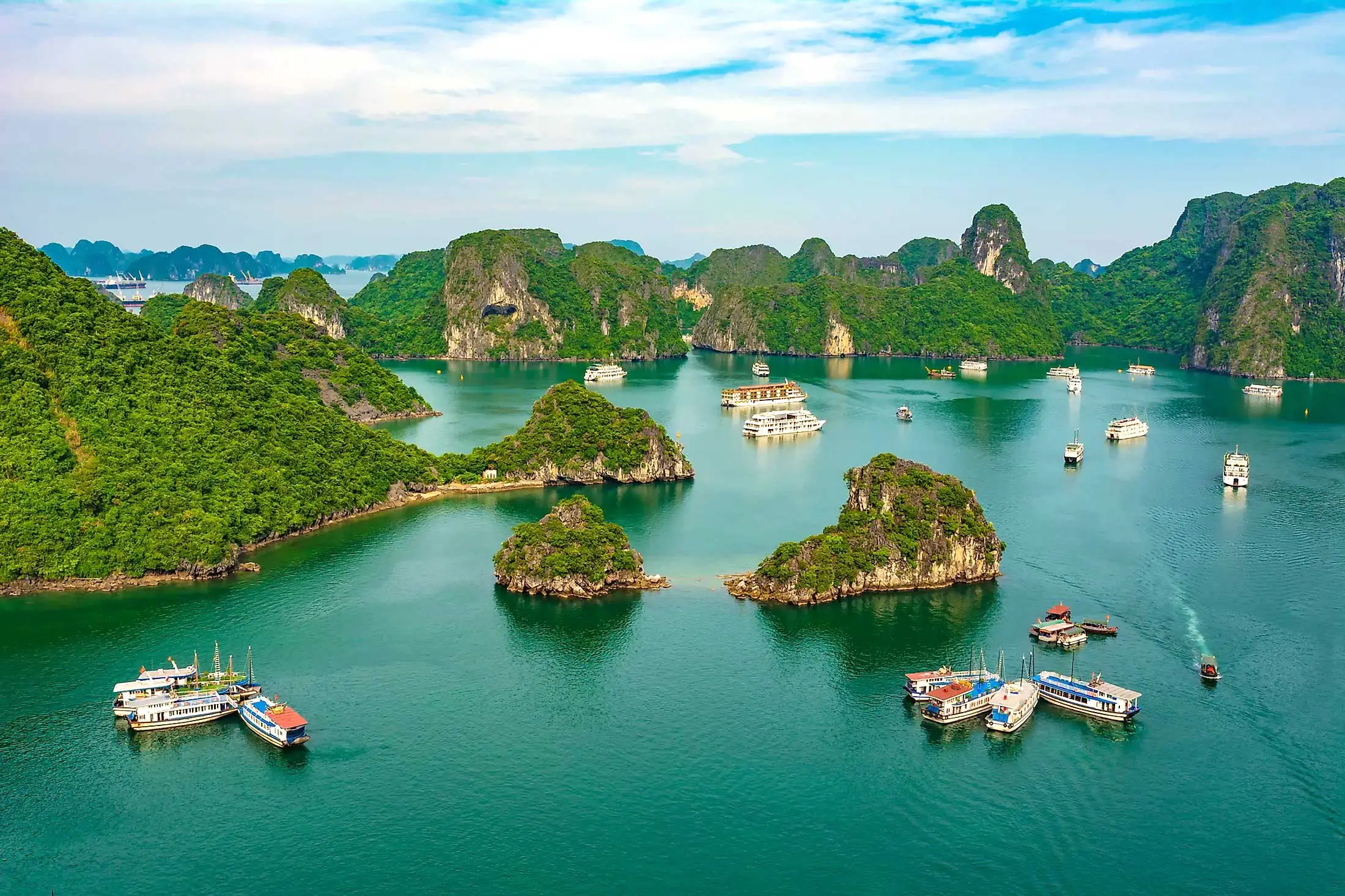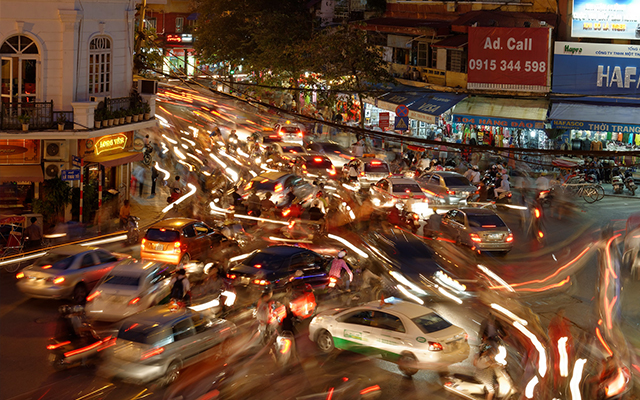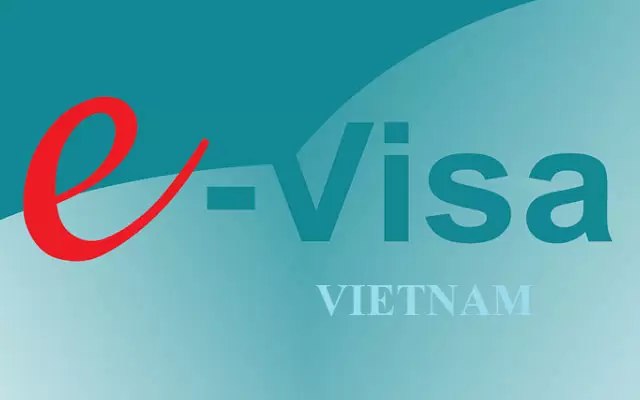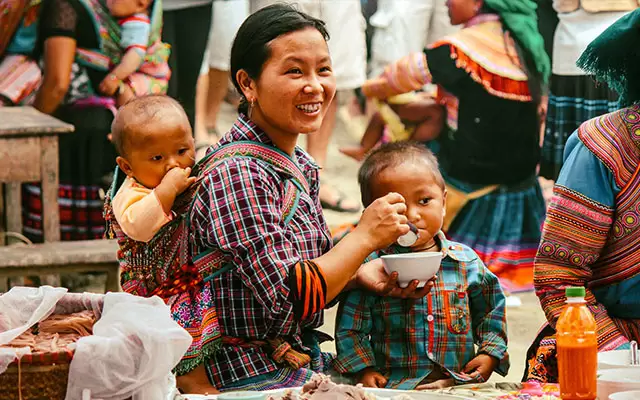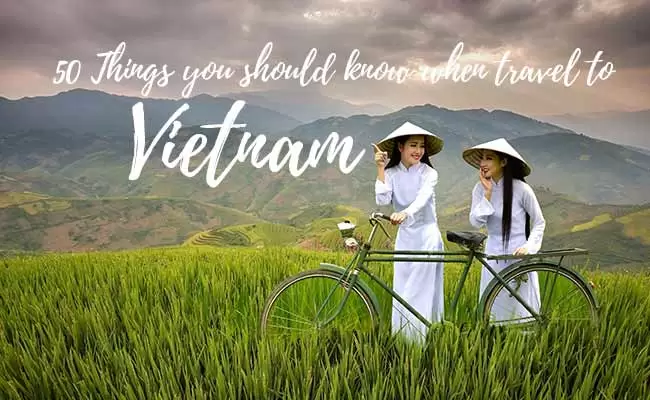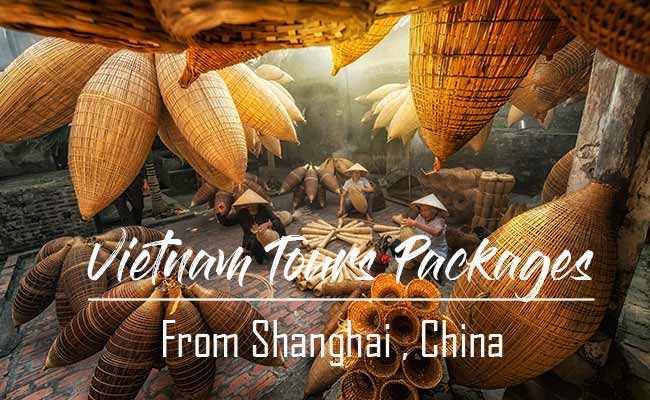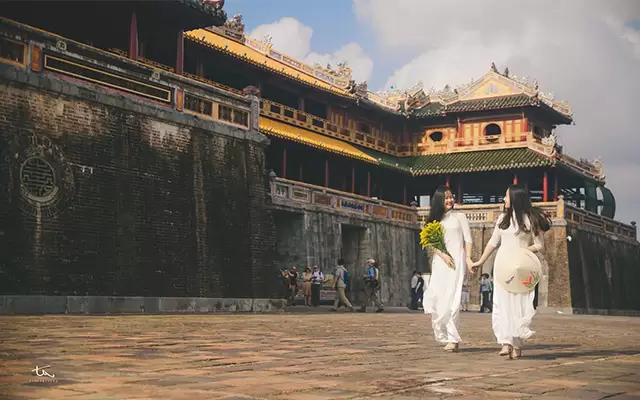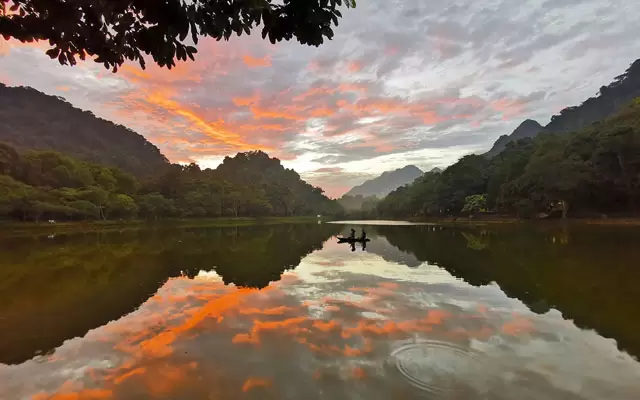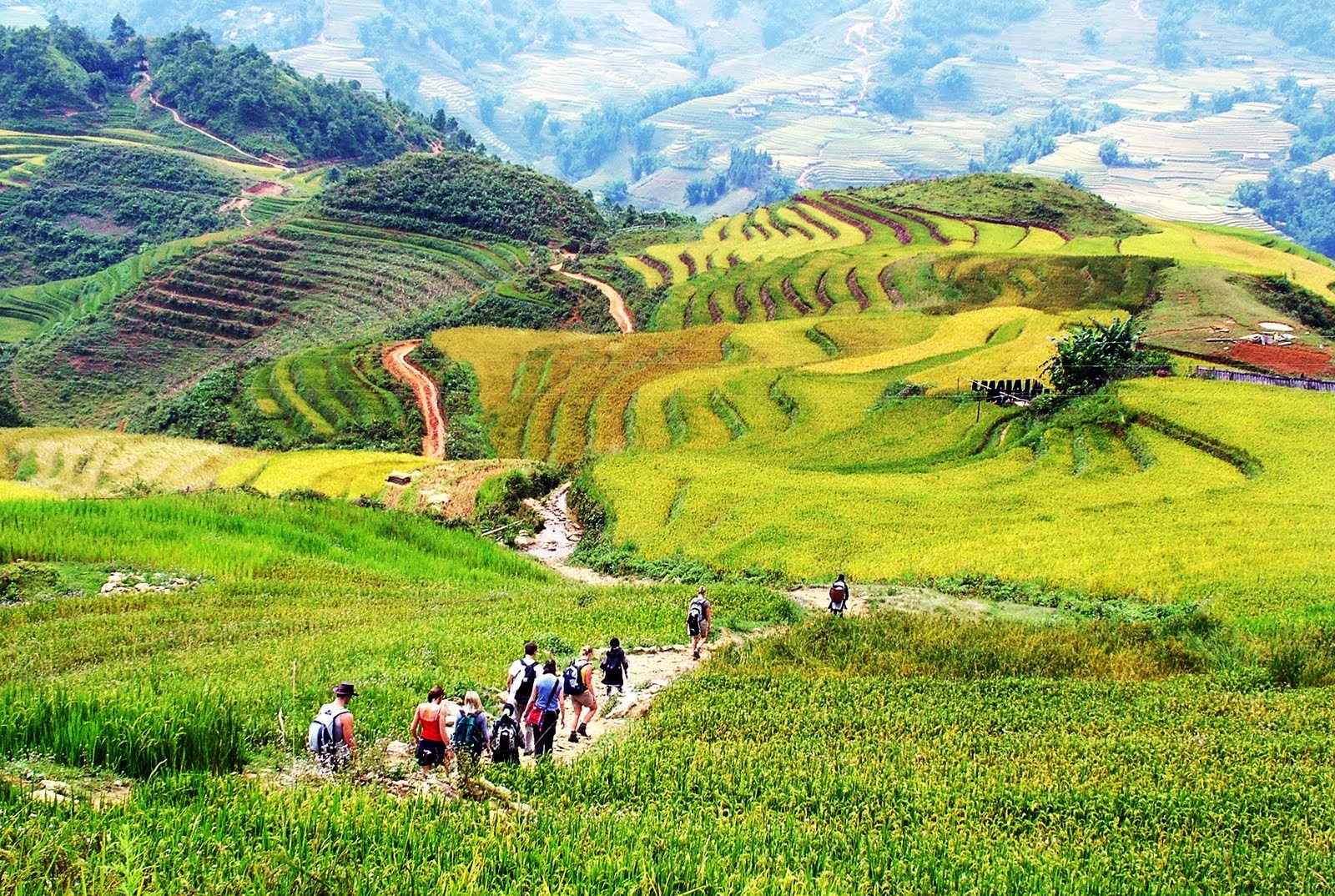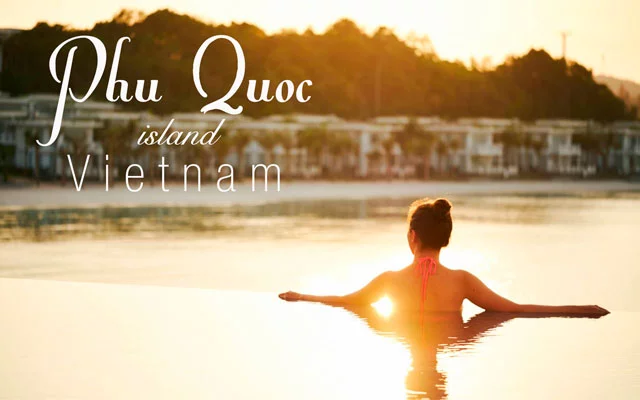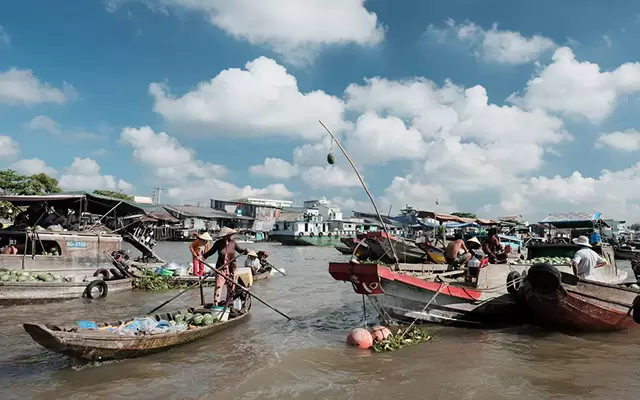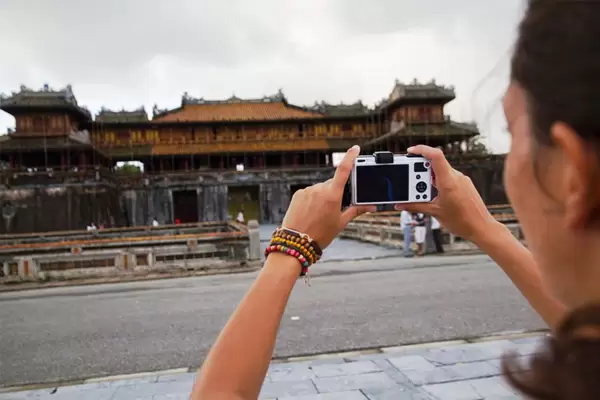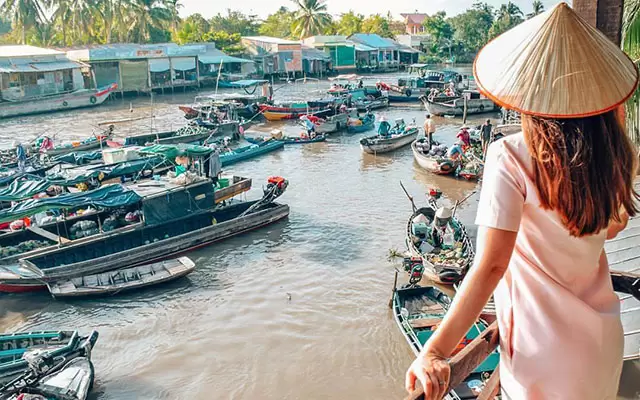The Top 11 Cultural Destinations in Vietnam from the North to the South

Exploring the cultural Vietnam has never been easy, but with these 11 destinations, you will know where to kick start your culture-vulture journey in Vietnam.
Born and raised for 4000 years and vertically stretching over 3260 kilometers, Vietnam is an interesting cultural destination in the Indochina Peninsular and all over Southeast Asia.
The beauty of Vietnam culture assembles the finest essence of the Chinese, Indian, Cambodian, French, and an overall local Vietnamese tradition. All of these turn Vietnam into a newly emerging destination for culture-vulture visitors worldwide.
The 11 destinations below are carefully selected by both native and foreign travelers. Every city represents a unique cultural attractiveness up and down the length of the country.

Table of Contents
Northern Vietnam
1. Hanoi – A Thousand Years of Civilization

For over 1000 years of culture and civilization, Hanoi has long been a well-established capital of Vietnam.
Fast-forward to the year 2019, Hanoi is still the largest cultural city across the country with multiple heritages.
The ancient land of Hanoi has well assembled a huge gallery of legends, poems, songs, stories and heroes that have been ever living along with the revolution of Vietnam over time.
What makes Hanoi special is the collection of various features and aspects that make Hanoi a representative of the cultural Vietnam.
Those can be seen as the villages born nested to one another bearing a tranquil beauty of Buddhism which lie in between the French-built architectural icons.
All of the two distinct sites have beautifully blended into each other and drawn travelers’ attention to Hanoi, making it one of the most sought-after cultural and historical destinations in Vietnam.
Hanoi culture as well shines through an archive of the handicraft villages and the “36 streets for 36 trades’, which hide their vibrant attractiveness within the iconic Hanoi Old Quarter.
The most popular picks in this category are as follows: Bat Trang Ceramic Village, Ngoc Ha Flower Village, Hang Ma Street and Hang Bac Street.
Lastly, one of the biggest things that represent Hanoi the best is the huge diversity of its authentic gastronomy from the local taste to a high-end dining vibe.

If you’re coming to Hanoi and wondering what to take, make sure you check these out:
1.1- Phở
1.2- Nem Chua Be (Crab Rolls)
1.3- Cha Ca (Turmeric Fish with Dill)
1.4- Bun Thang (Rice Vermicelli with Chicken, Egg, Pork)
1.5- Banh Goi (Fried Dumplings)
1.6- These are just few of the mouthwatering dishes that bring the truest savor of Hanoi to your taste buds.

2. Sapa – The Harmonious Beauty of the Northwestern Tribes
Sapa is a “heaven on Earth” for travelers with the utmost desire for learning cultures of the minorities.
Moving a little further to the North West mountains leads you to the next famous cultural destination in Northern Vietnam, Sapa.
Sapa is a popular relaxing hilly land located in Lao Cai province. There are five other minority groups that share the same neighbor with the Vietnamese Kinh people.
Amongst those, the H’mong and Red Dao indigenous people are the two most populous groups in the city. Each of which is a separate “kingdom” whose culture, profession and costumes bear a contrast to the others.
2.1- The Black H’mong
Making up 53% of the population, the Black H’mong is mostly the representative cultural symbol in Sapa. You can tell them apart with their green and purple outfits, on which the big patterns are embroidered on the collar and belt.
If you want to visit the tribal villages where the H’mong settle down, remember to follow the trails to the hamlets of Cat Cat – San Sa Ho, Sa Pa, Lao Chai, Seo Mi Ty, and Giang Phinh.
Boasting the techniques of planting rice from Southern China, the Black H’mong has long been “crafting” the mountain slopes into the spectacular terraced fields.

2.2- The Red Dao
Being the second biggest population in Sapa, the Red Dao people plant corn, rice, and cardamom down the valley and down the sides of the hills.
They’re scattered throughout the hamlets of Ho, Nam Sai, Thanh Phu. These are known to be the flat grounds cracked with a system of rivers and streams, where the aquaculture and rice plantation are believed to result in an abundant harvest.
Visitors in Hanoi usually choose Sapa as their immediate trip up North due to such a huge reputation this city owns.
Your memories to Sapa would be filled with the exotic cuisine, the colorful costumes of the ethnic ladies and the mystic cultural rituals in the daily life of the tribes.
3. Ninh Binh – The 10th Century Capital of Feudal Vietnam

Making a farewell to Sapa and leaving for Ninh Binh, a newly emerging cultural destination in the Southeast of Hanoi, you will be welcomed to the former capital during the 10th century of the Dinh, Le and Ly dynasties of ancient Vietnam.
Ninh Binh is an ancient land which is regarded as “The Little Vietnam” since it is composed of most of the major topography of the country: the delta, the mountains, the river, and the sea.
Ninh Binh is home to over 800 historical relics along with a wide diversity of stunning natural landscapes. Other than those, a huge collection of 114 traditional folk festivals are waiting for you to explore.
If asked to pick the best places to showcase the finest cultural essence of Ninh Binh, here is what we’ve got to recommend:
3.1- Phat Diem Cathedral
Commonly known as Phat Diem Stone Church, the Phat Diem Cathedral is a Catholic Church complex covering a 22-hectare-large ground in Kim Son District, Ninh Binh Province. This is one of the most breathtaking cathedrals all over Vietnam with its eclectic architectural style. This religious icon is considered to be the “Capital of Vietnamese Catholicism”.
3.2- Hoa Lu Ancient Capital

Hoa Lu is a special cultural-historical relic complex lying in the innermost of the Trang An Landscapes Complex. Its’ history expanded for over 1000 years, with the Hoa Lu Ancient Capital housing a huge number of historical relics through different dynasties.
4. Halong – Culture of the Serene Fishing Villages in the Heart of A UNESCO’s Heritage

Without a doubt, Halong Bay is one of the most talked-about destinations in the North of Vietnam thanks to such a huge reputation granted by UNESCO.
Halong Bay is recognized as a World Natural Heritage thanks to the massive formation of 1969 limestone islands covering an area of 1553 square kilometers.
If the biggest feature in the beauty of Halong is the picturesque Bay itself, the second biggest specialty comes from the long-lasting aquaculture.
The aquaculture in Halong shines through the tranquil fishing villages sleeping hiddenly betwixt the giant limestone mountains and has been preserved by generations of the local fishermen. The most popular fishing villages here are Cua Van, Vung Vieng and Ba Hang.
Amongst those, Cua Van fishing village seems to be the most sought-after site greatly representing the image of a real cultural Vietnam. It can be seen as a spectacular man-made wonder housing an elegant and peaceful heritage-like beauty. The fishing life here in Halong cannot go without the related rituals and festivals, which includes the worshipping the God of Whale and the God of the Sea.
A culture trip here around these fishing villages also brings you closer to the day in the life of the local fishermen, a fascinating exploration into the mystic caves, a night off-shore catching squids and an overnight at a fisherman’s homestay.
Central Vietnam
1. Hue – Footsteps of the Last Monarchy

If Hanoi is the cultural capital in the North, then Hue represents the Central land as a peaceful former capital, with a famous relic complex recognized by UNESCO as a World Cultural Heritage.
Hue was the capital of Vietnam during the Nguyen Dynasty from 1802 to 1945. It’s not hard to spot out the temples, houses, mausoleums, and palaces with a significant Oriental architecture that have long been worn out in time.
When the travel industry in Vietnam integrates with the world, Hue gradually became the “Festival City” of Vietnam, which was first held in 2000 and takes place every two years.
The Imperial City is a complex of 147 buildings built in several years under the rules of the first and second Nguyen Kings. This is the symbol of power and traditional Vietnamese architecture.
Within only a day wandering around the Hue Imperial City, you will get to feel the royal breeze behind the forbidden walls and learn about the rituals and customs once strictly applied by the royal family.
If the Imperial City and the system of mausoleums reflect a royal ambiance, then Thien Mu Pagoda depicts the religious beauty of the ancient capital.
The Thien Mu Pagoda was built during the 1600s under the rule of Lord Nguyen Hoang. A trip to Thien Mu Pagoda not only brings you to the best vista of the city but also reveals the mystic legend behind the building of the pagoda.
2. Quang Nam – Vestiage of A Long-lost Kingdom and Cultural Integration

The province of Quang Nam once belonged to a mighty Indian-influenced kingdom named Champa stretching along the lengthy coastal land in Central Vietnam.
Being situated by the ocean and granted with special sea topography, Quang Nam was once an important trading port and stop-over during the 17th and 18th centuries.
These periods of time mark the presence of a great integration formed by the Chinese, Spanish, Dutch, Portuguese, French, and the Japanese.
Because of such, your exploration in Quang Nam will take you to the abandoned ruins of the Champa temples, which shows the beauty of an Indian-influenced culture, and Hoian Old Quarter, a typical Oriental vibe.
These two sites are both UNESCO heritages, which make Quang Nam even more worthwhile for your trip.
The My Son Holy Land houses over 70 ancient religious temples firstly constructed in the 4th century. They were used as the holy sites where the royal Champa families and practitioners offered prayers to the deities and Gods. Whereas, some of the other buildings were constructed as tombs and mausoleums.
Hoian Old Quarter is famous for being an ancient town where the rustic yellow-walled tubed buildings line up. The town was built and developed by the Japanese, Chinese and Vietnamese in which the Chinese architecture is the main theme throughout the whole site.

Lying behind these walls are various traditional handicraft villages. They are still playing an essential role in the economy of the town as well as being the interesting attractions for travelers.
The most sought-after destinations are the Thanh Ha Pottery Village, Tra Que Herb Village, and Kim Bong Carpentry Village.
3. Central Highlands – A Private World of the Central Mountainous Ethnic Dwellers

If Sapa is where you can fully explore the days in the life of the tribal indigenous in Northwestern Vietnam, then the Central Highlands is that one section that gives you an akin experience with a more colorful and distinctive picture.
Central Highlands, or Tay Nguyen in Vietnamese, is not a single high land but a group of multiple highlands sitting next to one another. The whole region expands on five different provinces: Kon Tum, Gia Lai, Dak Lak, Dak Nong, and Lam Dong.
The culture in Central Highlands is diverse and vibrant, which is evident through 18 various ethnic groups. They have contributed a giant collection of poems, stories, and songs through words of mouth.
Other than these, the Space of Gong Culture and the archive of colorful and vivid festivals are other features that make Tay Nguyen an outstanding cultural destination in Vietnam.
All of these take root from the special terraced agriculture, which is a significant contrast against the one applied by the citizens from the lower land – deltas.
The Space of Gong Culture is the most recognizable form of culture listed by UNESCO as a Masterpiece of the Intangible Heritage of Humanity. It plays a crucial part in the spiritual life of tribes, which connects the voice of human with the deities in the back of the mind of the indigenous.
These gongs are played in most of the important cultural rituals, ceremonies, and festivals, such as the Buffalo Sacrifice Festival, Village Land Praying Festival, Harvest Festival, Gong Festival, and Elephant Race Festival.
Southern Vietnam
1. Saigon – Where Food Says It All

Saigon – Ho Chi Minh City, is such a young and modern city born and raised for roughly over 300 years. As a result, many people perceive that there’s no such thing as a “traditional culture” that Saigon has obtained.
However, the culture of Saigon does not simply come from a long-lasting history. Saigonese culture is a culture of integration and development, which makes it a significant metropolis and also a heaven of all kinds of cuisine worldwide.
If asked to pick one thing that represents Saigonese culture, food definitely comes on top. Saigon food culture was initially influenced by the French, which is now seen through the iconic Banh Mi followed by a sip of coffee with condensed milk.

With just a short walk along downtown, you can easily catch sight of a street vendor selling a smoky savory noodle soup where people line up on the pavement waiting to enjoy.
Sea snails, noodles, rice papers, broken rice, spring rolls and many more are other popular street food waiting to blow your mind.
These are staple daily food, yet they have a magical temptation that any Saigon locals would love to have each day.
The culture of eating in Saigon started by the sidewalks on the streets, which is now one of the must-do experiences for beginners travelling to Saigon, street food.
A night food tour like that for 3 to 4 hours is a typical nightlife activity that gives you a closer look at the real food culture in Saigon.
Apart from the tasty street food, Saigon is home to various international cuisines. You can easily find a decent restaurant serving Chinese Dim Sum, Indian curry, English tea or Japanese sushi when traveling to Saigon.
2. Can Tho – Where the Exiles Preserve a 300-year Wetland Civilization
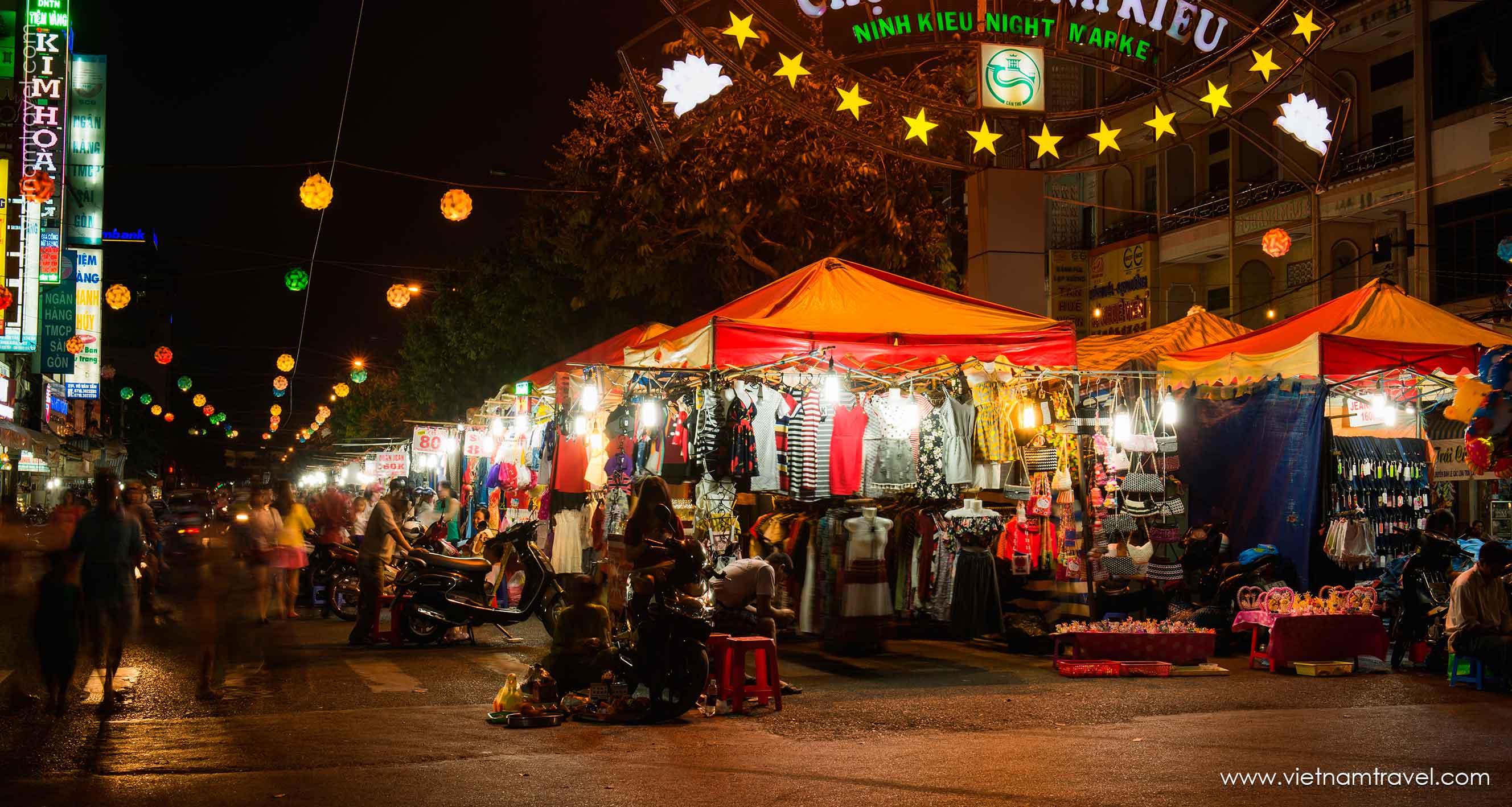
Can Tho is regarded as the “capital of the Mekong Delta”. It is of the five municipalities in Vietnam and a typical trading center of the Mekong wetland.
The beauty of Can Tho City comes from the immense network of rivers, which is best displayed through the famous Cai Rang Floating Market, a sensational tourist attraction in Can Tho.
Cai Rang is one of the largest floating markets across the Mekong Delta. The culture of trading on the surface of the rivers started hundreds of years ago when the immigrants from Central Vietnam rushed to the Southern land seeking a new and better future.
300 years ago, this gigantic delta was filled with scattered dense forests, with swamps and muddy roads in between.
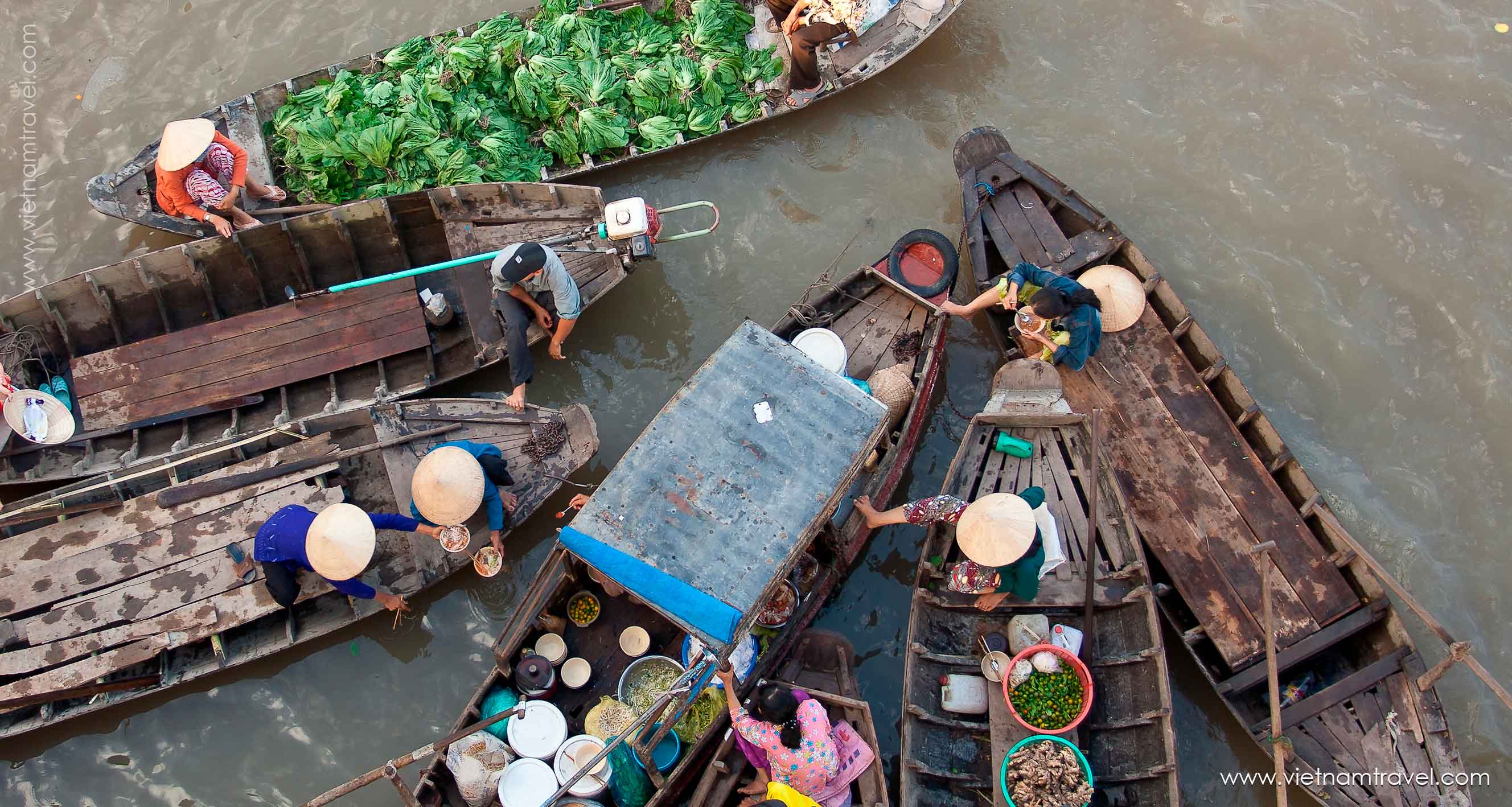
Trading and moving up and down the length of the rivers was hence a must, and Cai Rang Floating Market was then born as a vivid witness of such lively and exceptional culture of the Mekong dwellers.
Other than that, the shady tempting orchards are the next big thing that draws an outstanding attractiveness for this city. Over here, almost any kind of Southern tropical fruits are available.
The most famous orchards that should be on your bucket list are My Khanh, Phong Dien, and Tay Do. Get ready to indulge in the utmost relaxation under the shades of the tropical trees, pick the freshest fruits with your bare hands and enjoy a memorable trip with your family.
3. Tra Vinh – The “Holy Land” of the Khmer Cambodian
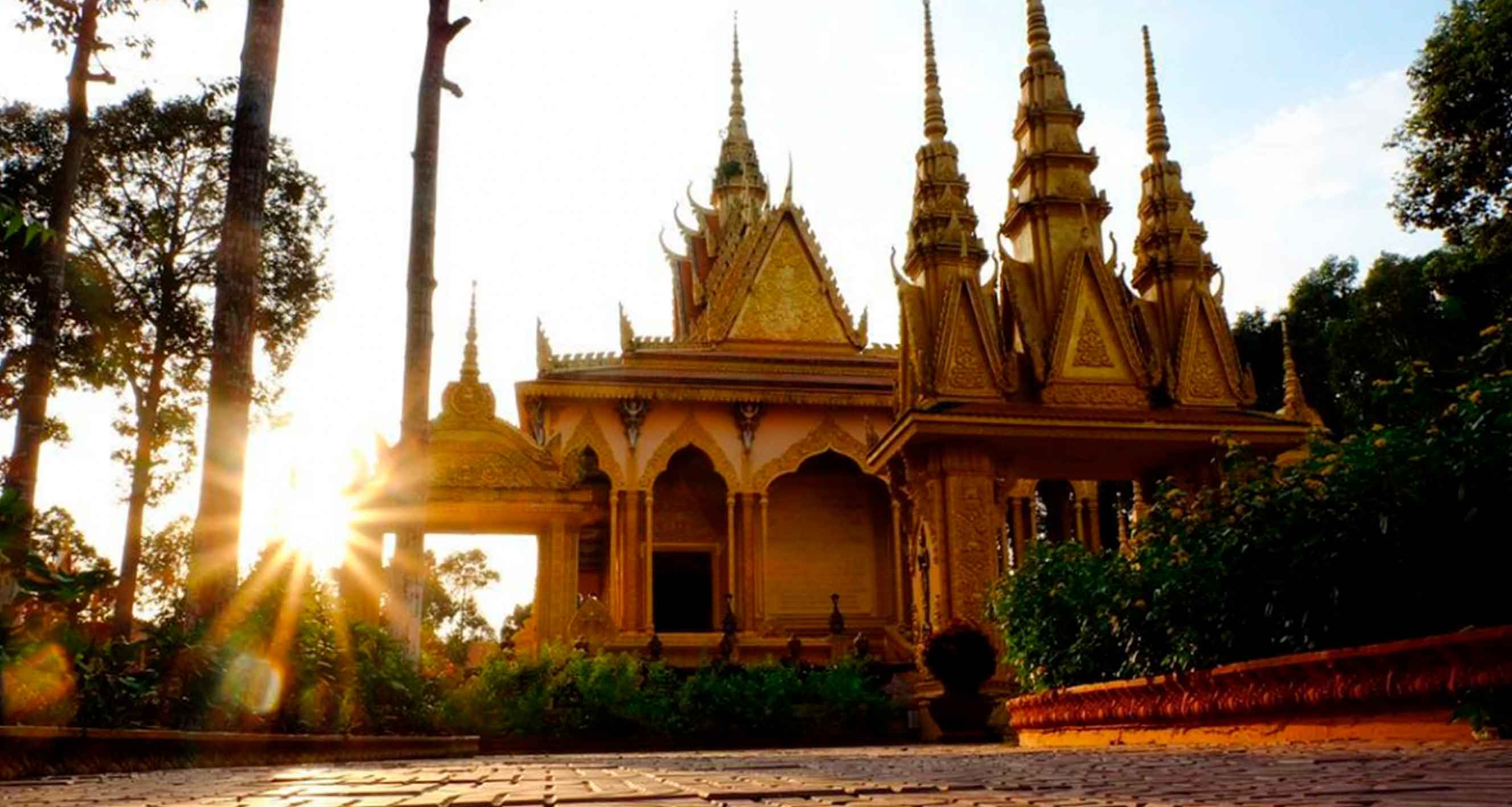
Located 130 kilometers away from Saigon to the South, Tra Vinh is a Khmer-influenced locality that has witnessed a harmonious life of the Khmer and Chinese.
Tra Vinh is a “sanctuary” of the glamorous pre-sectarian Buddhist temples that usually lie in the center of the flat spacious ground. Surrounding those pagodas are multiple hamlets and villages where the Khmer citizens have long settled down.
Tra Vinh is home to more than 140 Khmer temples, which have been constructed throughout different eras. Each of which bears a congenial Brahmanism and Buddism styles, which can be seen from the illustration of Nagar, Garuda, Gods, and fairies.
Due to the cordial neighbor of the three different races, the culture and religions here in Tra Vinh hence showcases an attractive fusion, in which the Khmer tradition is still taking over as the main facade.
Apart from the distinctive Cambodian-influenced culinary, the Khmer culture is well reflected by a number of unique festivals held in various points of time. Most of them mirror the agricultural life, such as Chol Chnam Thmay – Khmer New Year, Ok-Om-Bok – Moon Festival, Sene Đôl-ta – Ancestor Worshipping and a lot more.
4. Chau Doc – A Sanctuary of Religion and Aquaculture
The last city in the list belongs to an off-beaten destination situated along the Vietnam-Cambodia border, Chau Doc, An Giang Province.
This symbolic locality printed the footsteps of the Vietnamese forefathers during the reclamation of Vietnam’s ending cape 300 years ago.
Talking about Chau Doc, the local travelers think of the alluvial-rich rivers and lakes where hundreds of fishermen live their life with the waves. The Chau Doc fishing village was then born and hence expanded further to the rest of the Mekong Delta.
Visiting this fishing village is one of the best ways to explore Chau Doc to the fullest. Apparently, boating is the only method to travel around the village, as all of the floating houses are on the surface of the river.
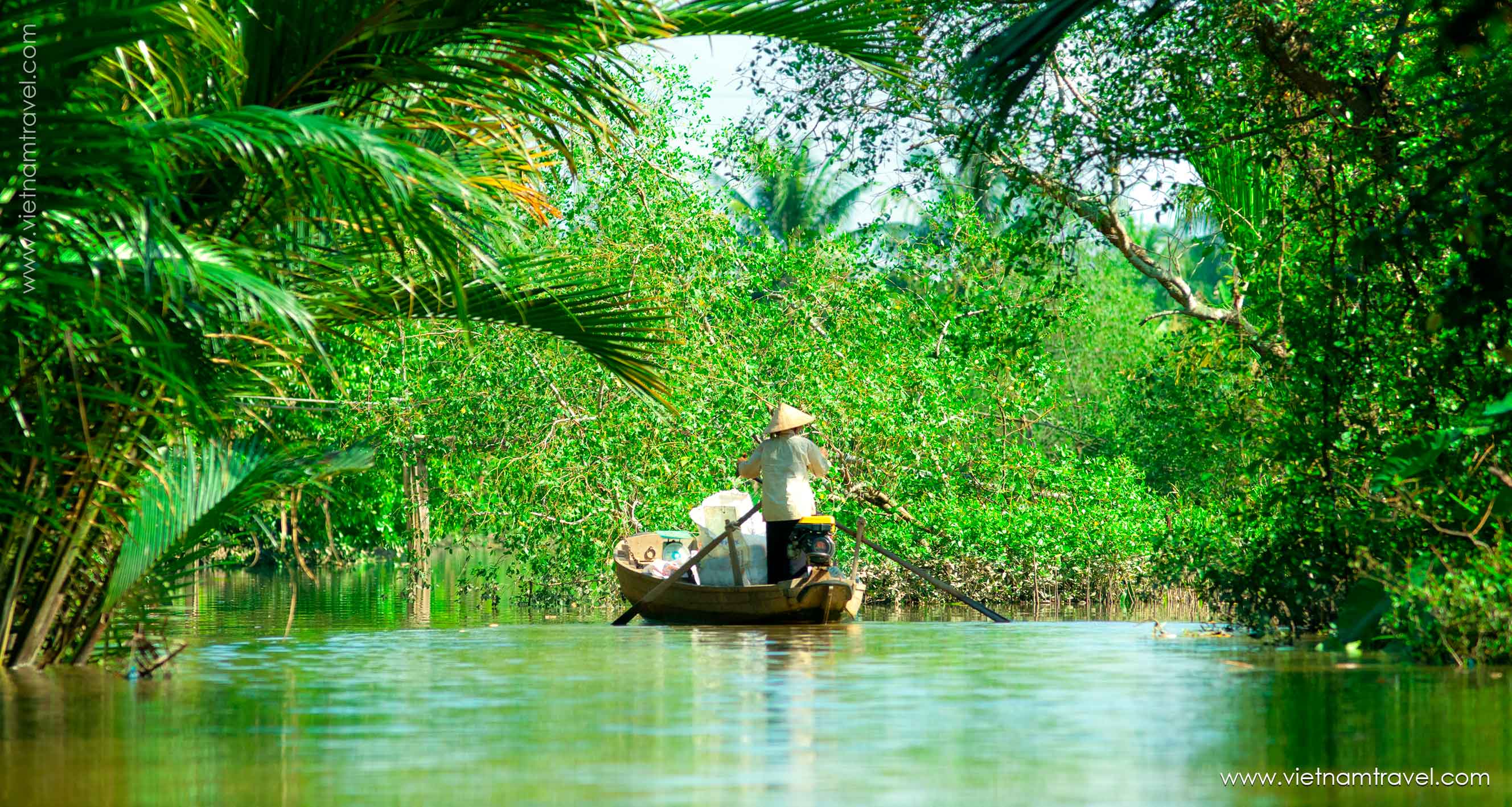
Religion is another remarkable that makes up another side of Chau Doc’s culture.
Tay An Pagoda is the first Buddhist temples in Vietnam that blends the traditional Vietnamese and Indian architectures into a religious building. The pagoda houses more than 200 wood-made statues carved with sharp and sophisticated designs following the 19th-century characteristic.
Last but not least, the culture of Chau Doc natives stands out through the Khmer gastronomy, in which the Khmer dwellers are famous for their techniques of creating savory dishes from dried fish.
If you have long been seeking a collective list of top cultural destinations in Vietnam, bookmark this article right now. These 11 top destinations from the North to the South paints the finest picture that illustrates the real Vietnam, which explains everything that ever happened to this S-shaped country for the past 4000 years.





































